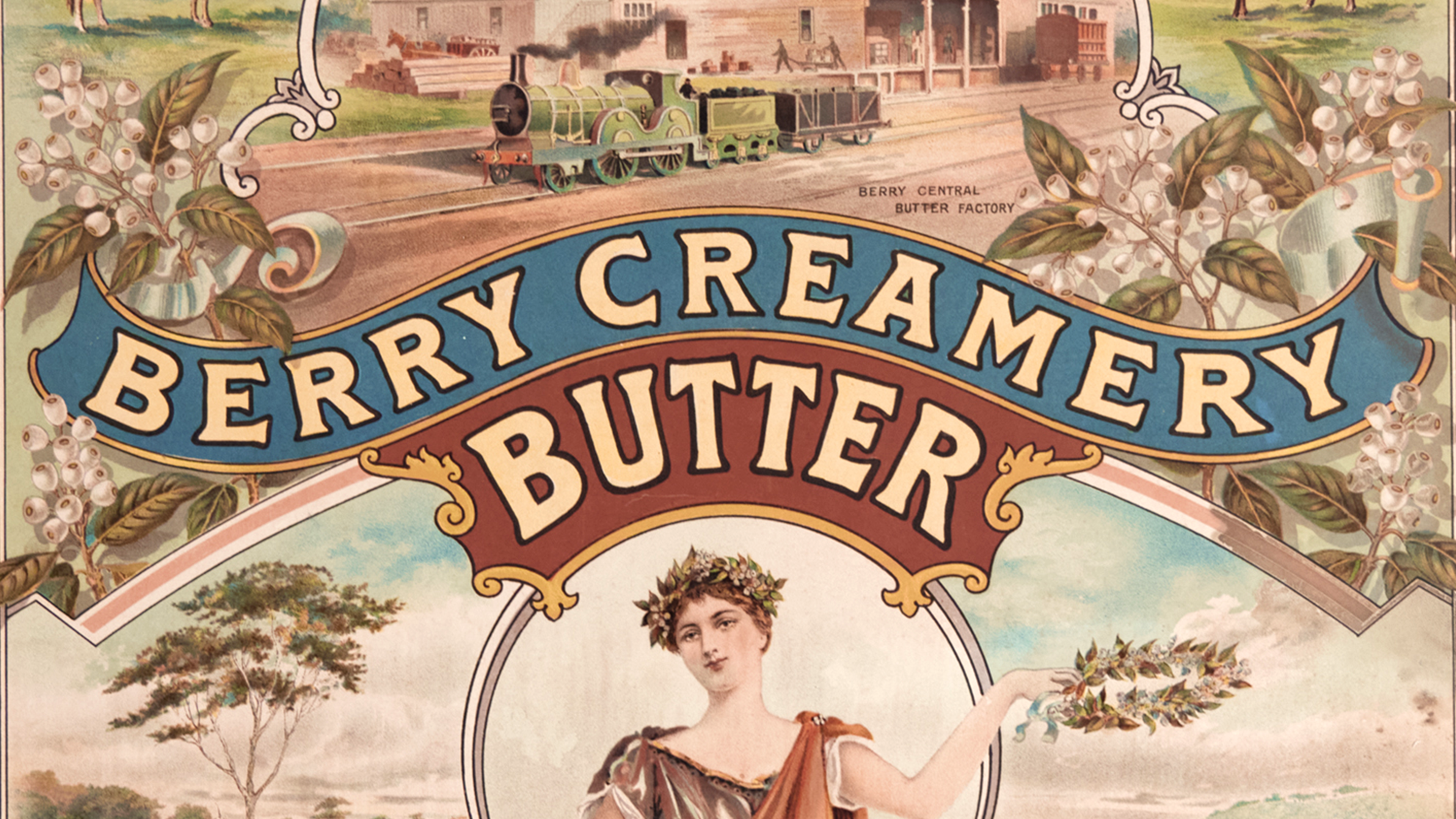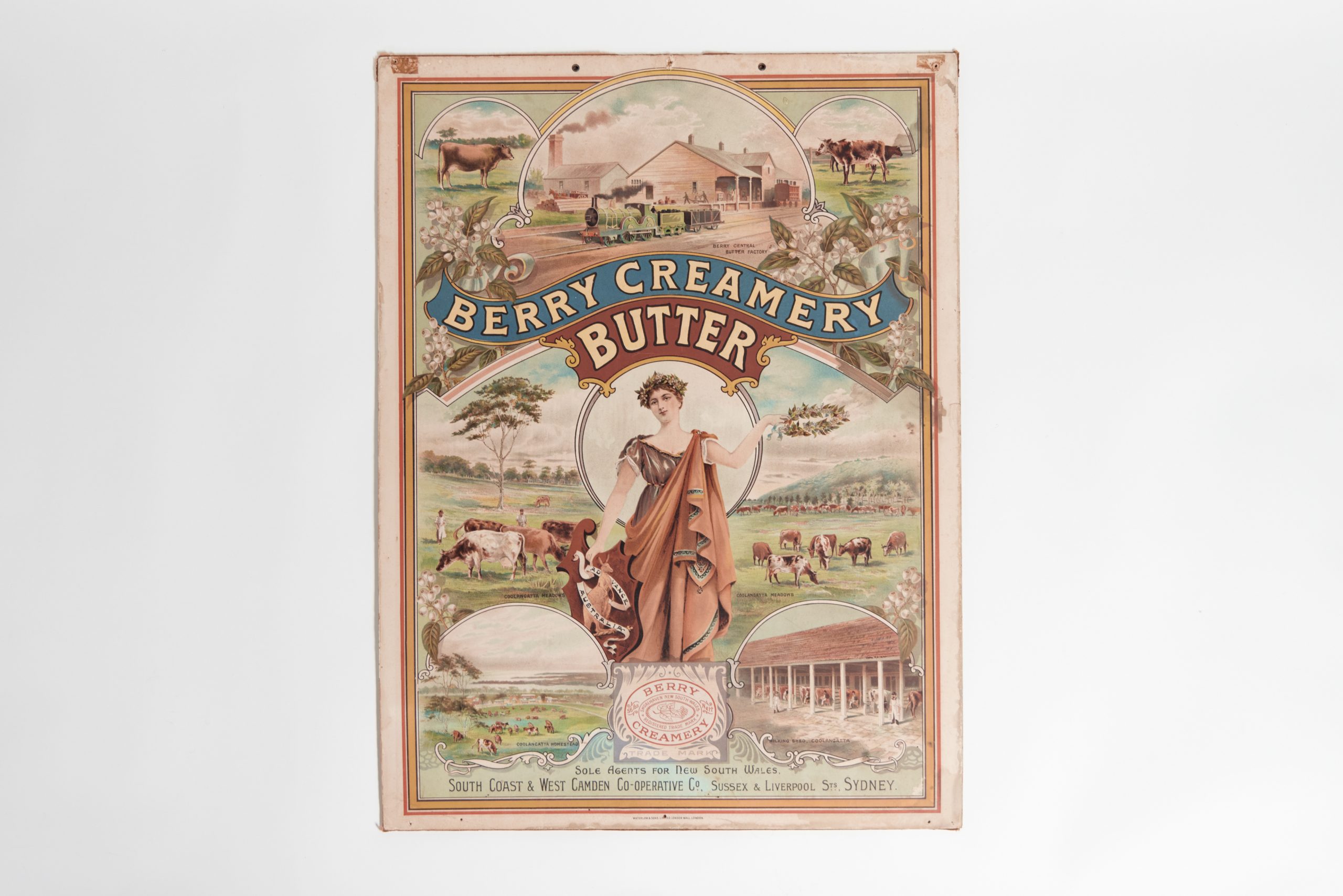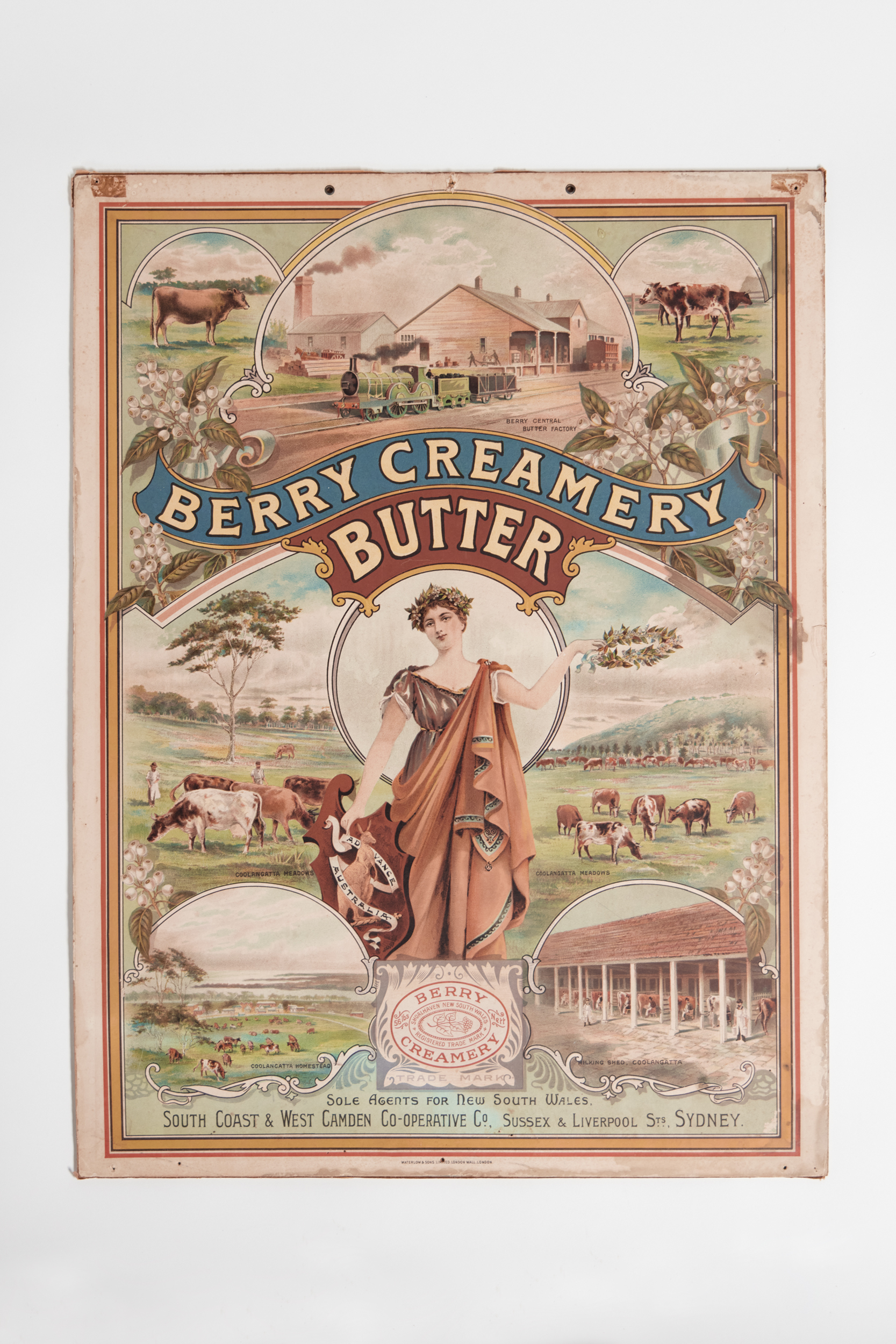All the Good of the Land
Selling Berry Butter to The World
The Berry Central Creamery was built in 1895 and within a few years became the first factory in NSW to adopt pasteurisation technology. Farmers from across the region delivered their milk to the Creamery, then described as ‘the largest and most complete butter factory in the colony.’
This advertisement was printed and distributed in England. The English market had become very important for Australian butter, however it had to out-compete high quality butter products from Denmark and New Zealand. So advertising became a vital part of that competition.
Then as now, images of rural landscapes were persuasive in food advertising, especially if the target audiences were people living in industrialised towns and cities. The poster depicts picturesque, idyllic landscapes with serene, gently grazing cows, unhurried workers in clean white clothing, and a clean and orderly facility.
The woman in classical Roman draping is a variation on Flora, the Roman goddess who embodies fertility, plants, and Spring. She is a sophisticated variation of the cheery milkmaids common in dairy food advertising at this time. All the iconography evokes a sense of fertility, abundance, and health from a carefully managed, peaceful landscape.
Australian dairy advertising sought to emphasise products as being Australian, in this case using Lilly Pilly foliage, the coat of arms with kangaroo, and Australian place names. To the consumer in a large English city, Australia could be distantly imagined as a pristine, natural environment. However, this is an imagined version.
Cows graze on treeless, rolling hills of grass. Though newly cleared pastoral areas in Australia often had tree stumps and remnants of bush burns, they are notably absent, as well as any indication of Aboriginal people or motifs.
Simply put, this was an ideal image of colonised Australia, its landscapes modified for and by British farming practices. It is a version of Australia that could subtly draw the consumer’s mind back to a nostalgic notion of pastoral England.
Apparently these advertising strategies were effective with British consumers. In March 1899, the Broughton Creek Mail reported that ‘Berry Butter is now a fancy brand on the London market and commands fancy prices there.’






